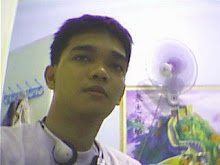Successes in regenerating skin and cartilage have led scientists to imagine the possibility of regenerating or reconstructing vital organs, for example, the liver. The problems are more difficult because the three dimensional architecture is complex and contains an assortment of different tissue types. The constituent cells will not automatically assume the correct structure without a matrix to guide them. Griffith-Cima has turned to a technique called "three-dimensional printing" (3DP) to create a biodegradable scaffold, which she is using to recreate miniature livers in the laboratory. 3DP is a computer aided design, computer aided manufacturing (CAD/CAM) technology wherein a three-dimensional blue-print programmed or scanned into the computer is translated into a three-dimensional structure by alternating layers of powder and adhesive in a precisely controlled fashion. Although Griffith-Cima admits it sounds like a Star-Trek replicator, it is actually more akin to the common ink-jet printers found in many offices, only engineered to work in three dimensions instead of two. Originally developed for ceramics, Griffith-Cima has altered 3DP to work with biodegradable suture-like materials (e.g. polyglycolic acid).
Griffith-Cima's "mini-liver" scaffolding has an "artery" at one end and a "vein" at the other, with a branching network in-between. So far, she has been able to show that liver cells seeded on to her scaffold will sort into "hepatocytes" , cells with the metabolic functions of the liver, and "endothelial cells", which line the capillaries and blood vessels, in a manner similar to what would be expected for a natural liver. Eventually, she hopes to have a laboratory generated liver which can be implanted in patients with liver dysfunction, reducing the need for liver transplants from organ donors. Occasionally, for inspiration, Griffith-Cima tours the wards of Childrens Hospital with her collaborator, Joseph Vacanti. She will regard her work as successful, she says, the first time a child is saved when one of her experimental livers. Vacanti is convinced that the laboratory cultured liver "is the best long term solution."

No comments:
Post a Comment